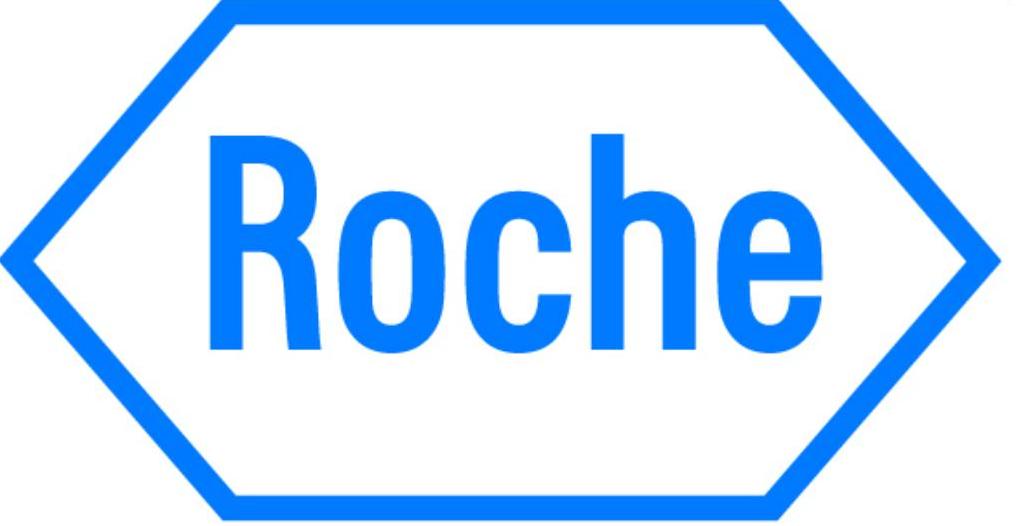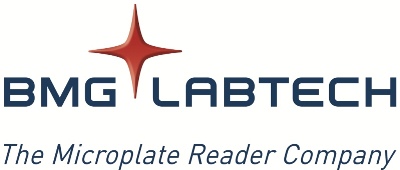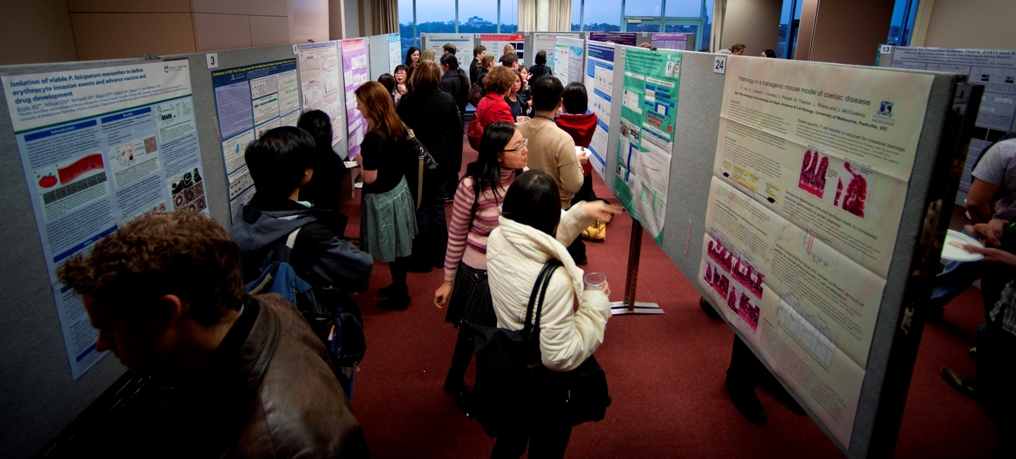VIIN Young Investigator Symposium 2014
| Date |
3 October 2014 |
| Time |
8:30am - 6:00pm |
| Venue |
Walter and Eliza Hall Institute |
| Location |
1G Royal Parade, Parkville VIC 3052 View Map |
| iCal |
Add to Calendar |
– –
A great opportunity to present your work to the VIIN!
Postgrad Students, Postdocs and RAs are invited to submit abstracts for oral and poster presentations. Prizes will be awarded for best presentations.
Keynote Speaker:
'From lab bench to global health'
Prof Anne Kelso, Director of the WHO Collaborating Centre for Reference and Research on Influenza
Read about the symposium >
Sponsors:





Registration:
Registration is free, open to all and includes food and drinks on the day. Registration closes 19 September 2014.
Lab heads and senior researchers - please attend and support your Young Investigators, even if you can only stay for a session or two!
Register here >
Abstract Submission:
Please submit abstracts in this format by email to info@viin.org.au by 22 August 2014.
How to get there >

Download a flyer >
2014 Organising Committee:
Milena Awad, Monash University, Department of Microbiology
Julianne Bayliss, Victorian Infectious Diseases Reference Laboratories
Natalie Counihan, Deakin University
Celine Deffrasnes, CSIRO Australian Animal Health Laboratory
Eileen Dunne, Murdoch Childrens Research Institute
Chwan Hong Foo, CSIRO Australian Animal Health Laboratory
Maria Liaskos, Monash Institute of Medical Research
Lisa Mielke, Walter and Eliza Hall Institute of Medical Research
Rachel Lundie, Burnet Institute
Morag Milton, Victorian Infection and Immunity Network
Jaclyn Pearson, University of Melbourne, Department of Microbiology and Immunology
Event Program
Show Program
| |
SPEAKING PROGRAM (subject to change)
|
|
08:30-09:00
|
REGISTRATION
|
|
09:00-10:00
|
SESSION 1: KEYNOTE SESSION
CHAIR: Maria Liaskos, MIMR-PHI Institute
|
|
09:00-10:00
|
From lab bench to global health
Keynote Speaker:
Anne Kelso, Director of the WHO Collaborating Centre for Reference and Research on Influenza
|
|
10:00-10:30
|
MORNING TEA - Tapestry Lounge
CHAT WITH THE KEYNOTE SPEAKER - WEHI Boardroom
|
|
10:30-12:00
|
SESSION 2: HOST DEFENCE
CHAIRS: Sheila Dias, Walter and Eliza Hall Institute
Kim Pham, Walter and Eliza Hall Institute
|
|
10:30-10:45
|
Skin-resident memory CD4+ T cells are retained by hair follicles following skin damage
Nicholas Collins, University of Melbourne, Department of Microbiology and Immunology at the Peter Doherty Institute (PG)
|
|
10:45-11:00
|
Intravital imaging of CD8 T cell responses in the brain during experimental cerebral malaria
Julia Gregory, University of Melbourne, Department of Microbiology and Immunology at the Peter Doherty Institute (PD)
|
|
11:00-11:15
|
Sidt2 is required for innate immunity to extracellular double stranded RNA
Tan Nguyen, Walter and Eliza Hall Institute (PG)
|
|
11:15-11:30
|
Examining the role of MLKL in necroptotic cell death
Joanne Hildebrand, Walter and Eliza Hall Institute (PD)
|
|
11:30-11:45
|
The inflammasome adaptor ASC mediates gastric tumourigenesis independent of inflammation
Alison Browning, MIMR-PHI Institute (PG)
|
|
11:45-12:00
|
Harbouring a killer: a proteomic approach to comparing host responses to Hendra virus
Amanda Woon, Monash University, Department of Biochemistry and Molecular Biology (PG)
|
|
12:00-13:00
|
LUNCH
|
|
13:00-15:00
|
SESSION 3: PATHOGENS
CHAIRS: Jhih-Hang Jiang, Monash University, Department of Microbiology
Jaclyn Pearson, University of Melbourne, Department of Microbiology and Immunology at the Peter Doherty Institute
|
|
13:00-13:15
|
Subverting innate immunity: Regulator recruitment as a novel complement evasion strategy for malaria parasites
Alexander Kennedy, Walter and Eliza Hall Institute (PG)
|
|
13:15-13:30
|
Unraveling a network of interactions involved in the trafficking of virulence proteins in P. falciparum-infected erythrocytes
Steven Batinovic, University of Melbourne, Department of Biochemistry and Molecular Biology at Bio21 Institute (PG)
|
|
13:30-13:45
|
Identification of substrate recognition sites for type III effector NleC of enteropathogenic Escherichia coli
Cristina Giogha, University of Melbourne, Department of Microbiology and Immunology at the Peter Doherty Institute (PG)
|
|
13:45-14:00
|
Understanding the role of Clostridium difficile toxin A and toxin B in pathogenesis and the host immune response, using a mouse model of infection
Steven Mileto, Monash University, Department of Microbiology (PG)
|
|
14:00-14:15
|
The role of recombination and mutation in the generation of genetic diversity of HIV-1
Albert Garcia Minambres, Deakin University and CSIRO Australian Animal Health Laboratory (PG)
|
|
14:15-14:30
|
“High Fidelity” HIV Mutations have reduced viral fitness in vivo
Sarah Lloyd, University of Melbourne, Department of Microbiology and Immunology at the Peter Doherty Institute (PG)
|
|
14:30-14:45
|
The unique high-affinity iron assimilation system of dimorphic pathogen Pencillium marneffei
Shivani Pasricha, University of Melbourne, Department of Microbiology and Immunology at the Peter Doherty Institute (PD) |
|
14:45-15:00
|
Protein export and host cell effectors in Toxoplasma
Michael Coffey, Walter and Eliza Hall Institute (PG)
|
|
15:00-15:30
|
AFTERNOON TEA
|
|
15:30-17:00
|
SESSION 4: CLINICAL AND TRANSLATIONAL RESEARCH
CHAIRS: Anushi Rajapaksa, Murdoch Childrens Research Institute
Julianne Bayliss, Victorian Infectious Diseases Reference Laboratory
|
|
15:30-15:45
|
The immunotherapeutic use of bovine colostrum against Clostridium difficile
Bliss Cunningham, Monash University, Department of Microbiology (PG)
|
|
15:45-16:00
|
A novel inhibitor of Dengue Virus that activates the unfolded protein response and provides in vivo protection against lethal infection
Johanna Fraser, Monash University, Department of Biochemistry and Molecular Biology (PD)
|
|
16:00-16:15
|
Investigating the escape mechanisms of Hepatitis C virus towards a broadly neutralising monoclonal antibody, MAb24
Jun Gu, Burnet Institute (PG)
|
|
16:15-16:30
|
Association between naturally acquired antibodies to the Plasmodium falciparum merozoite surface proteins DBL1 and DBL2 and protection from Malaria clinical episodes
Chris Chiu, Walter and Eliza Hall Institute (PG)
|
|
16:30-17:00
|
SESSION 5: SCIENCE BITES
CHAIR: Natalie Counihan, Deakin University
|
|
16:30-16:33
|
Super-resolution microscopy reveals important roles for microtubule bundling by rabies virus P3 protein in immune evasion and disease
Aaron Brice, University of Melbourne, Department of Biochemistry and Molecular Biology at Bio21 Institute (PG)
|
|
16:33-16:36
|
Reliable in silico algorithms for determining HIV-1 coreceptor usage and patient eligibility for Maraviroc
Kieran Cashin, Burnet Institute (PG)
|
|
16:36-16:39
|
TNF Receptor Associated Factor-2 negatively regulates excessive cytokine production and recruitment of inflammatory leukocytes to the skin
Nima Etemadi, Walter and Eliza Hall Institute (PG)
|
|
16:39-16:42
|
Chimeric secretory component: a novel tool for serodiagnosis of mucosal infections
Khayriyyah Mohd Hanafiah, Burnet Institute (PG)
|
|
16:42-16:45
|
Hematopoietic cell-derived CXCL10 impairs efficient control of blood stage malaria and promotes severe disease
Lisa Ioannidis, Walter and Eliza Hall Institute (PD)
|
|
16:45-16:48
|
Regulation of binary toxin by CdtR in different backgrounds of Clostridium difficile
Shelley Lyon, Monash University, Department of Microbiology (PG)
|
|
16:48-16:51
|
Programming T cell division destiny
Julia Marchingo, Walter and Eliza Hall Institute (PG)
|
|
16:51-16:54
|
Biochemical actions of novel compounds against Trypanosomas Brucei
Daniel Stoessel, Monash Institute of Pharmaceutical Sciences (PG)
|
|
16:54-16:57
|
Identification and localisation of tetracycline resistance elements in Clostridium sordellii
Callum Vidor, Monash University, Department of Microbiology (PG)
|
|
16:57-17:00
|
The dose makes the poison: dendritic cell suppression by P. falciparum
Xi Zen Yap, Burnet Institute (PG)
|
|
17:00-18:00
|
POSTER SESSION, FOOD AND DRINKS
|
|
18:00
|
ORAL/POSTER PRIZE PRESENTATION
|
| |
POSTER PROGRAM (subject to change)
|
|
|
Plasmodium falciparum Erythrocyte Membrane Protein 1 and innate immunity
Elizabeth Aitken, University of Melbourne, Department of Medicine at the Peter Doherty Institute (PD)
|
|
|
Mutations within conserved SH3-binding motifs identified in key regulatory West Nile Virus proteins impact on replication
Turgut Esad Aktepe, University of Melbourne, Department of Microbiology and Immunology at the Peter Doherty Institute (PG)
|
|
|
Using high-throughput approaches to measure levels of immunity to Plasmodium falciparum across populations
Ricardo Ataíde, Burnet Institute (PD)
|
|
|
Envelope glycoprotein determinants of macrophage tropism during progressive HIV-1 subtype C infection
Katharina Borm, Burnet Institute (PG)
|
|
|
Interferon gamma autoantibodies associated with susceptibility to disseminated mycobacterial infections
Julian Bosco, Walter and Eliza Hall Institute (PG)
|
|
|
Prosthetic joint infections and superbug biofilms
Darcie Cooper, Deakin University (Honours Student)
|
|
|
MYB is essential for the function of thymus-derived regulatory T cells
Sheila Dias, Walter and Eliza Hall Institute (PD)
|
|
|
Tcf-1 controls the differentiation of innate-like CD8+Rorγt+ T cells
Brigette Duckworth, Walter and Eliza Hall Institute (Vacation Scholarship Student)
|
|
|
Antibody response to a library of Plasmodium vivax invasion antigens in an area of decreasing malaria transmission
Camila Franca, Walter and Eliza Hall Institute (PG)
|
|
|
The correlation of an M Peptide ELISA with the direct bactericidal assay for Group A Streptococcus
Hannah Frost, Murdoch Childrens Research Institute (RA)
|
|
|
Role of Regulatory T cells in Citrobacter rodentium infection
Ka Yee Fung, University of Melbourne, Department of Microbiology and Immunology at the Peter Doherty Institute (PD)
|
|
|
Characterization of the role of the MARCH family of ubiquitin ligases on membrane proteostasis in vivo by label free proteomic analysis
Pauline Huang, University of Melbourne, Department of Biochemistry and Molecular Biology at Bio21 Institute (PD)
|
|
|
The therapeutic use of colostrum-derived antibodies against toxin and spores of Clostridium difficile
Melanie Hutton, Monash University, Department of Microbiology (PD)
|
|
|
Single nucleotide polymorphisms within cardiolipin synthase 2 reduce daptomycin susceptibility and impact on cardiolipin biogenesis in Staphylococcus aureus
Jhih-Hang Jiang, Monash University, Department of Microbiology (PD)
|
|
|
An information-theoretic approach to dissect the kinetics of lymphocyte response
Andrey Kan, Walter and Eliza Hall Institute (PD)
|
|
|
How malarial infection leads to severe malarial anemia
Asha Lakkavaram, Deakin University (PG)
|
| |
H5N1 haemagglutinin cleavage site motif: Mediator of endothelial tropism in chickens
Jasmina Luczo, CSIRO Australian Animal Health Laboratory (PG) |
|
|
Investigating the role of IFN-lambda in immunity against parasites
Rachel Lundie, Burnet Institute (PD)
|
|
|
Mouse Norovirus recruits PI4P during infection
Tanya O’Donnell, University of Melbourne, Department of Microbiology and Immunology at the Peter Doherty Institute (PG)
|
|
|
CHD7 deficiency in “Looper”, a new mouse model of CHARGE syndrome, results in ossicle malformation, otosclerosis and hearing impairment
Jacqueline Ogier, Murdoch Childrens Research Institute (RA)
|
|
|
A genome-wide RNAi screen to identify host factors involved in Legionella pneumophila Dot/Icm effector translocation
Sze Ying Ong, University of Melbourne, Department of Microbiology and Immunology at the Peter Doherty Institute (PG)
|
|
|
Characterisation of a family of novel glycosyltransferases from Salmonella
Joshua Newson, University of Melbourne, Department of Microbiology and Immunology at the Peter Doherty Institute (PG)
|
|
|
Asymmetric Cell Division during T lineage development - consequences in immunity and cancer
Kim Pham, Walter and Eliza Hall Institute (PD)
|
|
|
Haematopoietic Cell Kinase activation promotes the development and progression of colorectal cancer in mice
Ashleigh Poh, Walter and Eliza Hall Institute (PG)
|
|
|
Aerosol delivery of therapeutics by inhalation via acoustic nebulisation produces both local and systemic responses in sheep
Anushi Rajapaksa, Murdoch Childrens Research Institute (PD)
|
|
|
Shape of the fluoroquinolone concentration-time profile is critical in resistance prevention
Vanessa Rees, Monash Institute of Pharmaceutical Sciences (PG)
|
|
|
Starving the superbug: A novel antimicrobial therapy that targets selenium metabolism to treat Clostridium difficile infection
Christine Roder, Deakin University (PG)
|
|
|
Sequence-dependent off-target inhibition of TLR7/8 by synthetic microRNA inhibitors
Soroush Sarvestani, MIMR-PHI Institute (PG)
|
|
|
A single dose vaccine depot that is slowly degraded in tissue to induce and maintain strong long-lived antibody responses
Toshiki Sekiya, University of Melbourne, Department of Microbiology and Immunology at the Peter Doherty Institute (PG)
|
|
|
Characterisation of the Legionella pneumophila Dot/Icm effector SnpL
Hugh Spencer, Department of Microbiology and Immunology at the Peter Doherty Institute (PG)
|
|
|
Small molecules as a weapon of choice to target RIPK2
Che Stafford, Walter and Eliza Hall Institute (PG)
|
| |
Identification of enhancers in the malaria parasite Plasmodium falciparum
Jingyi Tang, University of Melbourne, Department of Medicine at the Peter Doherty Institute (PG) |
|
|
IFNγ and Smac mimetics induce synergistic killing of tumor cell lines
Maria Tanzer, Walter and Eliza Hall Institute (PG)
|
|
|
Bioinformatic analysis of genome-wide SNP data from NGS studies of P. falciparum
Natacha Tessier, Walter and Eliza Hall Institute (RA)
|
|
|
The branched structure of an electrostatically charged Pam2Cys-containing lipopeptide is important for conferring immunogenicity when formulated with antigen
Acep Riza Wijayadikusumah, University of Melbourne, Department of Microbiology and Immunology at the Peter Doherty Institute (PG)
|
| |
Structure-function analysis of the Toxoplasma glideosome reveals that two myosin essential light chains regulate parasite motility
Melanie Williams, Walter and Eliza Hall Institute (PG) |
|
|
Mapping potential substrate ‘docking’ sites of a novel bacteria enzyme NleB1 which inhibits host cell death
Tania Wong, University of Melbourne, Department of Microbiology and Immunology at the Peter Doherty Institute (PG)
|
PG = Postgraduate Student, PD = Postdoctoral Researcher, RA = Research Assistant






